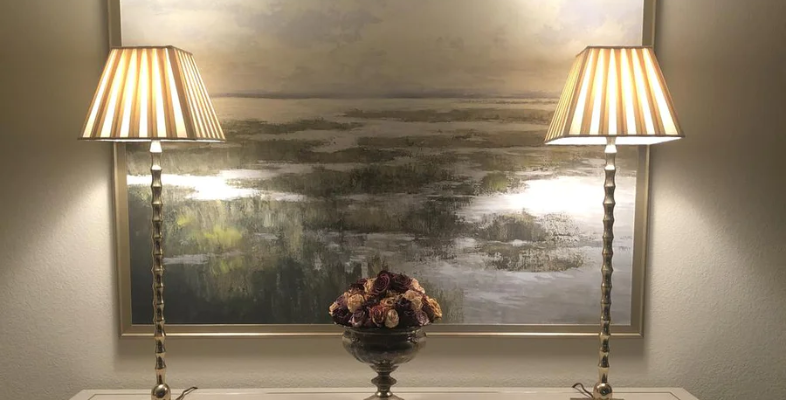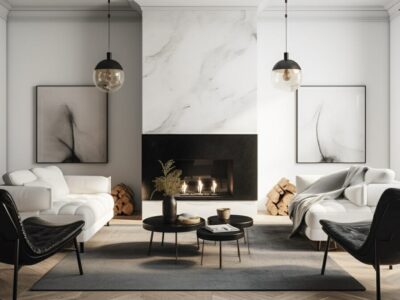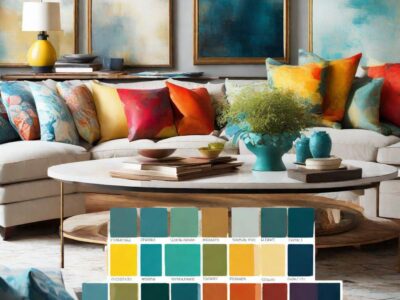When it comes to revamping a room’s ambiance or enhancing its functionality, the right lamp shade plays a pivotal role. Not only does it provide illumination, but it also adds aesthetic value. Choosing the perfect lamp shade for rooms in your home involves a blend of practicality and style. Here’s a complete guide on what to consider, helping you find the ideal match for your space.
Room Style and Décor
When evaluating your room’s style and décor, think about its nuanced aesthetics. Is it exuding a modern, traditional, minimalist, or eclectic vibe? Take a holistic view of the room’s design language—furniture, color palette, and overall ambiance. Each element should easily align with the chosen style. For example, a contemporary space might thrive with a sleek, unembellished lamp shade that harmonizes with clean lines; while an eclectic room could flourish with a shade boasting intricate patterns or textural richness to amplify its vibrancy and diversity of design elements.
Size and Proportion
Moving beyond the initial consideration, look deeper into the dimensions. The proportion of the lamp shade in relation to the lamp base and the room itself is critical. A larger room grants the opportunity for a more substantial shade, adding a statement piece without overpowering the space. On the other hand, in a more confined area, choosing a shade that balances proportionately prevents the room from feeling cramped or overshadowed. The shade’s height should complement the lamp base, establishing a sense of visual equilibrium and coherence in the overall presentation. This synchronization plays a pivotal role in making sure the lamp becomes an enhancing element rather than a distracting imposition within the room’s layout.
Lighting Needs
Understanding the lighting requirements of a room is fundamental in creating its desired ambiance. The type of lamp shade used plays a big part in shaping the quality and atmosphere of the emitted light. Factors such as the material and color of the lamp shade significantly influence the light’s characteristics. For instance, opting for translucent or lighter-colored shades facilitates a more luminous environment as they allow a higher amount of light to pass through. This choice is great for spaces where brightness is key or for tasks that require improved visibility. But opaque or darker shades offer a softer, diffused lighting effect, encouraging a more relaxed or intimate atmosphere. These shades are optimal for creating cozy corners or ambient lighting that doesn’t overwhelm the space.
Material and Texture
Exploring the diverse array of materials and textures available for lamp shades opens up a realm of possibilities in shaping the room’s visual and tactile experience. Fabric shades, with their varied textures and colors, not only add a touch of warmth but also contribute to diffusing light. This results in a gentle and inviting glow. On the other hand, metal or glass shades introduce a modern and sleek aesthetic to the room, producing sharper, more directional light. Careful consideration of the chosen material is necessary, not only in complementing the room’s ambiance but also in addressing maintenance needs. Fabrics may require occasional cleaning, while metal or glass shades might need less upkeep but may reflect a particular aesthetic that needs alignment with the room’s overall design language.
Functionality and Purpose
The lamp serves as a multifaceted addition to the room, contributing to both its appeal and practical functionality. Beyond mere illumination, it acts as an essential element in setting the look and feel of a room. Its primary purpose might vary depending on the setting: it could function as a focused reading light, providing ample brightness for comfortable reading sessions; or it might serve as an ambient accessory, softly diffusing light to create a relaxed atmosphere. What’s more, it can double as a decorative piece, accentuating the room’s style and adding a touch of sophistication or quirkiness. The lamp shade’s design intricacies, such as its shape and angle, play a large part in directing and dispersing the emitted light. A wider or flared shade casts a broader glow, spreading light across a larger area, while narrower shades offer more concentrated light, making them perfect for cozy reading nooks or specific task areas.
Color Palette
When thinking about the lamp shade’s color, it’s important to harmonize it with the room’s existing color palette. Choosing complementary hues can establish a harmonious balance, smoothly blending the lamp into the overall aesthetic. On the other hand, going with contrasting colors creates an intentional focal point, adding an element of visual interest and dynamism to the space.
Experimentation with neutral tones offers versatility, allowing the lamp to adapt effortlessly to various decorative schemes and themes within the room. But bold and vibrant colors can transform the lamp into a striking accent piece, injecting a burst of personality and character into the room’s design. Ultimately, the choice of color for the lamp shade contributes greatly to the room’s overall ambiance and visual appeal.
Personal Preference
When selecting a lamp shade, remember that your personal taste holds a large amount of importance. It should harmonize with your unique style and preferences, reflecting your personality and aesthetic sensibilities. Embrace the freedom to look at a plethora of options, allowing yourself the luxury of experimenting with diverse shades until you discover the one that impeccably complements your decor and resonates with your individuality. Let your instincts guide you in this exploration, and don’t rush the process; take the time to find the shade that feels unequivocally perfect for your space.
Budget and Quality
Establishing a comprehensive budget range is pivotal when giving thought to a lamp shade purchase. While it might be enticing to base your decision solely on the price tag, it’s imperative to strike a balance between cost and quality. Give due consideration to the shade’s durability and overall quality. Investing in a superior-quality shade not only assures its longevity but also guarantees optimal performance and enduring satisfaction. Assessing the materials, craftsmanship, and construction will aid in making the best decision that aligns with both your financial constraints and your aspiration for a lasting, high-performance lamp shade.
Choosing the perfect lamp shade for your room involves a thoughtful analysis of various factors, from style and size to functionality and personal taste. By considering these aspects in tandem, you can make sure that the lamp shade not only illuminates your space but also elevates its overall appeal. Remember, the ideal lamp shade improves both form and function, contributing to a well-balanced and inviting room ambiance.










Comments